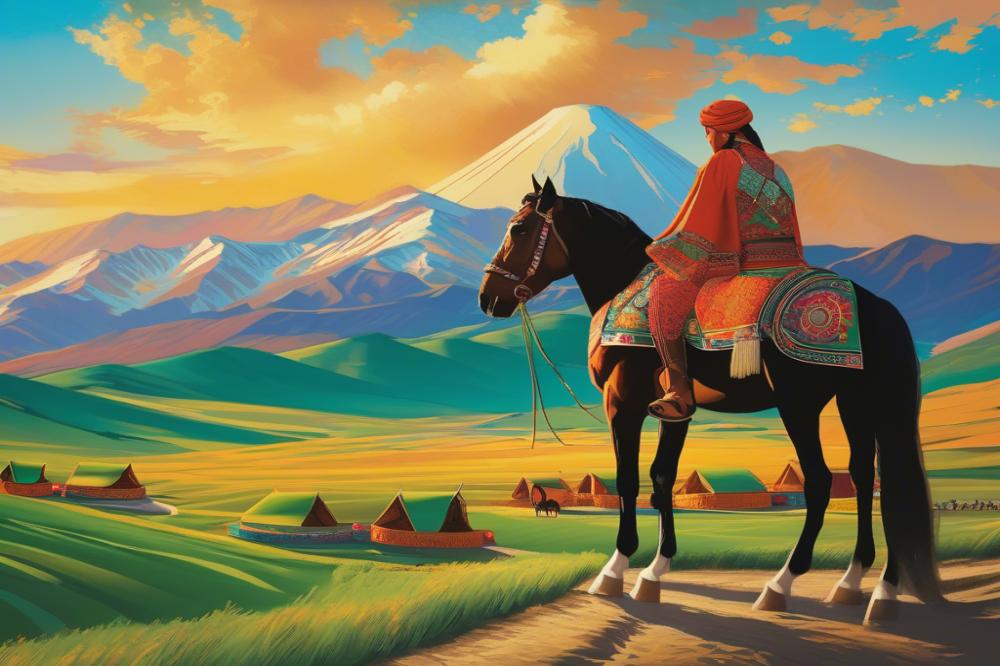The Cultural Importance of Horses in Central Asian yurt life
Many cultures throughout history have treasured the relationship between humans and Horses. From the plains of Mongolia to the ranches of the American West, these animals have played crucial roles in society. They have served as companions, transportation, and symbols of power. In various communities, they are celebrated in folklore and art, emphasizing their deep-rooted significance across the globe.
Central Asian life presents a fascinating chapter in the story of humanity’s connection with these incredible creatures. In this region, the yurt stands as a symbol of nomadic existence. These portable homes perfectly fit a lifestyle that embraces mobility and the natural rhythms of the environment. Here, horses actively participate in daily life, becoming essential to the overall way of living in such a challenging landscape.
Supporting a nomadic lifestyle, these animals allow families to travel vast distances to find grazing lands. They are more than just a means of transport; they embody the very essence of freedom and adaptability. Within the context of Central Asian Culture, they represent survival and resilience, showcasing how crucial they are to the harmony of the people and their environment.
This strong bond between Central Asians and their steeds reveals a world where cooperation and companionship thrive. In many ways, the story of life in and around a yurt cannot be told without considering the role of these animals. Their importance transcends mere functionality; it speaks to the heart of what it means to be a part of this unique heritage.
Horses in yurt life
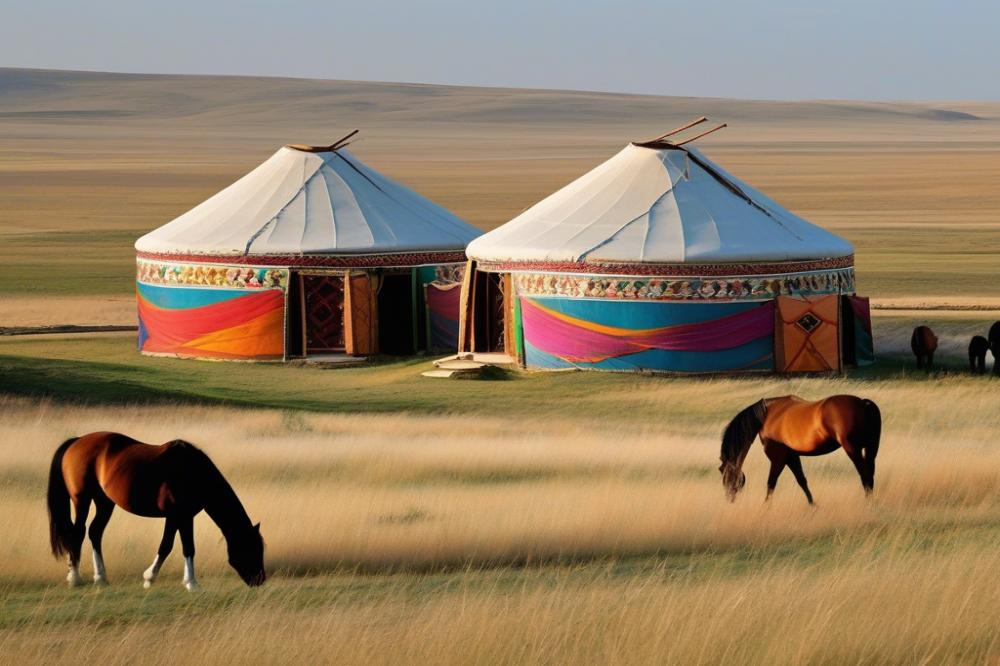
The role of these animals in daily activities is vital for nomadic communities. Beyond just being a means of travel, they serve as a source of livelihood. In harsh terrains, they transport families and goods. Their strong backs carry everything from supplies to children. Moving from one pasture to another relies heavily on them.
Transportation is not just practical; it reflects a way of life. Families depend on various skills passed down through generations. Mastering the techniques of riding and handling them is essential. Events such as races and competitions highlight their importance in local culture. Community gatherings often revolve around these competitions.
Alongside their practical uses, there is a deep connection between these animals and traditional practices in yurt life. Rituals and festivals celebrate the bond between people and these creatures. Customary practices include special care and feeding, showcasing respect. Elders teach the younger generation about their value, ensuring traditions remain alive.
In addition to transportation, they provide milk and meat, which are staples in the diet. Their presence rounds out the picture of nomadic living. Daily tasks involve grooming and feeding, which foster a unique relationship. This connection grows with every interaction that families share with them. Cultural identity is intertwined with nomadic life, reflecting in art and stories passed down through time.
Equestrian Traditions in Central Asia
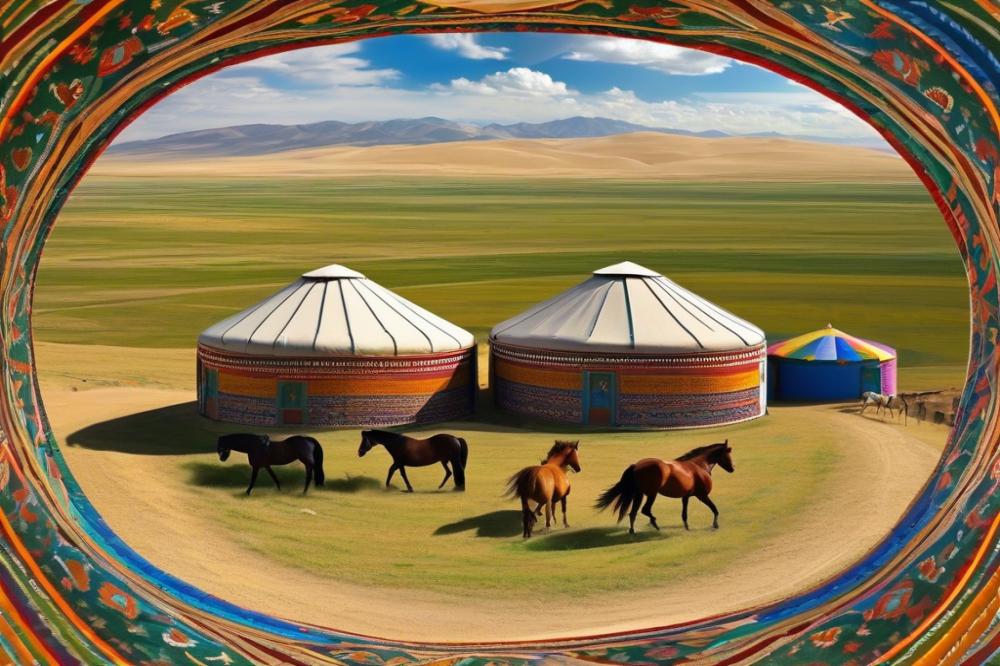
Historical Context of Horse Culture in Rural Central Asia
Horse culture has deep roots in rural areas of Central Asia. For centuries, these animals have played a vital role in the lives of nomadic communities. They provided transportation, helped with herding livestock, and were essential for warfare. Historical accounts show that horses were symbols of status and power among tribal leaders. The bond between humans and these creatures goes beyond utility; it is a part of identity. Central Asian Cultures embraced the horse not just for practical reasons but also for their spiritual significance.
Equestrian Events and Festivities Celebrating Horse Heritage
Festivals showcasing equestrian skills take place across the region. These events attract many visitors and celebrate the heritage of horse culture. Contests like horse racing, tug-of-war, and games involving great skill are common. Local communities gather to watch and participate, making it a vibrant social occasion. Traditional music often fills the air, creating a joyful atmosphere. Such festivities are not merely competitions; they serve to reinforce community bonds and traditions.
The Influence of Horse Riding Skills on Community Identity
Riding ability plays a crucial role in shaping individual and community identity. Skilled riders often earn respect and admiration from their peers. Many local legends and myths depict brave riders, further cementing the importance of these abilities. In some areas, children learn to ride before they can walk. This early exposure not only builds confidence but also instills a sense of belonging. Through shared experiences of riding and training, families and communities strengthen their ties. Equestrian prowess becomes a source of pride and a way to honor past generations.
cultural significance of Horses
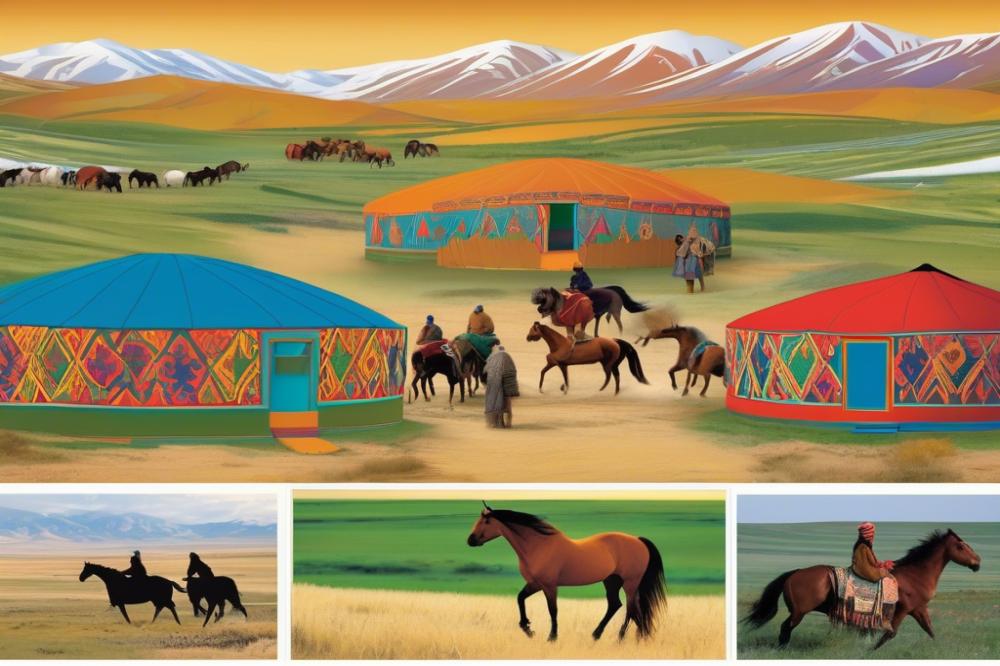
Symbolism of Horses in Folklore and Local Traditions
In Central Asia, the animal holds a sacred place in folklore. Tales of heroism often involve these creatures, showcasing their power and loyalty. Legends emphasize the bond between humans and these beings. Such narratives contribute to the way animals are seen in local cultures. Stories passed down through generations highlight bravery, adventure, and friendship. Many families still tell these old tales around evening fires, reminding everyone of their importance.
Indicators of Social Status and Wealth in Pastoral Nomadism
Wealth among pastoral nomads is often measured by herd size and grazing land. Having a large number of healthy animals signifies a family’s success. The quality of livestock also matters. Finer breeds command more respect. Thus, the ownership of valuable animals directly affects social standing. A person can gain admiration and influence through these animals. This dynamic shapes relationships in these communities. Social gatherings often involve displaying prized animals to build reputations.
Connections Between Horses and Cultural Rituals in Central Asian Societies
Cultural ceremonies frequently feature these animals. Festivals celebrate transitions such as births, marriages, and seasonal changes. Many of these events include traditional games or races. These activities strengthen community bonds. Rituals often incorporate blessings for healthy herds, showcasing respect. For instance, some groups perform specific dances or songs during these events. This connection between animals and rituals reinforces the ties between community members. Celebrations are vibrant, and they echo the central role of animals in daily life.
Horse Herding Practices
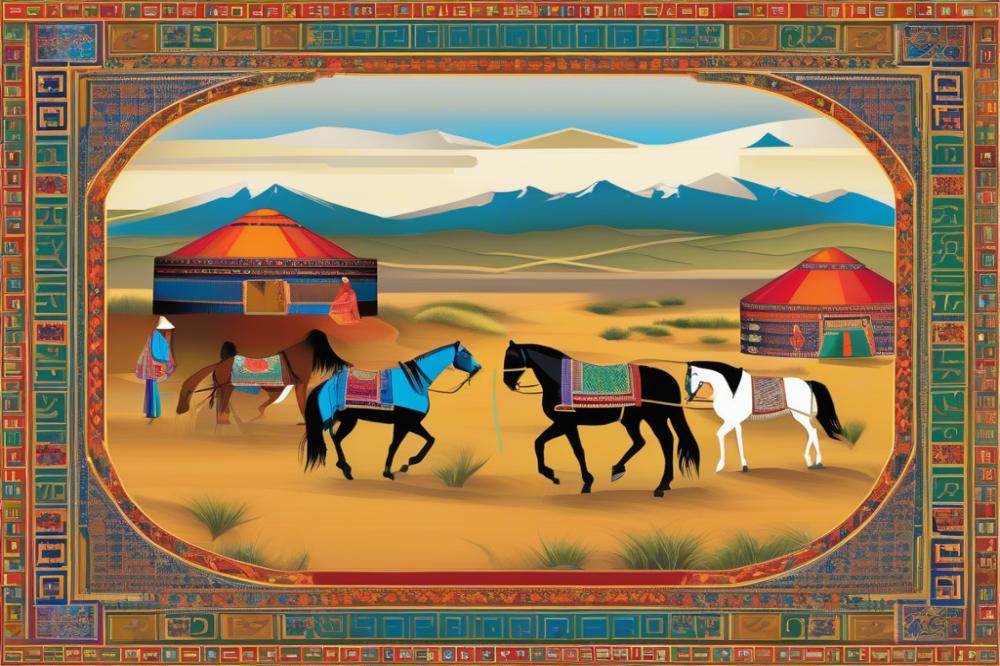
Herding plays a fundamental role in the life of Central Asian communities that live in yurts. For these nomadic people, horses are much more than means of transportation; they are essential companions. Horse husbandry involves various techniques passed down through generations. These methods are not only practical but also deeply rooted in cultural identity.
One notable practice is the use of natural herding methods, which rely on the animal’s instincts. Herds are often moved to different pastures, allowing the animals to forage freely. Local herders demonstrate impressive skills as they guide these livestock across diverse landscapes. Utilizing traditional equipment, like ropes and lassos, reflects the connection between herders and their animals.
Training foals begins at an early age, involving gentle handling and consistent care. This approach creates a bond of trust between the handler and the animal. Families often involve children in these activities, instilling a sense of responsibility and teamwork. Knowledge about specific breeds and their unique characteristics is shared among community members.
Rural communities benefit greatly from sustainable practices in horse husbandry. These methods help maintain the land’s fertility and promote biodiversity. Sustainable grazing allows for the regeneration of pastures, which is crucial in areas with challenging climates. Families also exchange breeding stock, allowing for genetic diversity, which strengthens herds overall.
Moreover, the social impact of these practices is significant. They foster a sense of community, as herders collaborate and share resources. Festivals often celebrate the role of horses in these societies. Such gatherings not only showcase skills but also reinforce cultural traditions.
In conclusion, horse herding is a vital component of yurt life in Central Asia. Techniques of husbandry are diverse and pivotal to the survival of these nomadic societies. Sustainable practices play a critical role in maintaining the environment while preserving cultural heritage. Such connections create a vibrant tapestry of life among these communities.
Challenges Facing Horse Culture
Modernization poses a significant threat to traditional horse-related practices in Central Asia. Many young people prefer city life over the nomadic lifestyle their families have practiced for generations. This shift impacts the ways in which they view horses and their roles in everyday life. In urban environments, fewer opportunities exist for engaging with these animals. Traditional skills tied to horsemanship, once passed down through families, are now at risk of fading away.
Environmental changes also affect equestrian traditions. Droughts and climate change can limit grazing lands. Livestock, including horses, face food shortages, making it difficult for nomadic families to sustain their way of life. Economic pressures add another layer of complexity. Many communities rely on tourism, which can prioritize other aspects of culture over horse traditions. As a result, the importance of these animals to cultural identity may diminish.
Efforts are underway to preserve horse culture amid these challenges. Local organizations and cultural groups promote events that showcase traditional skills like archery on horseback and herding practices. Educational programs target youth, teaching them about their heritage and encouraging them to stay connected to it. Support for nomadic lifestyles is crucial for keeping these practices alive. Many continue to advocate for laws that protect grazing rights and support sustainable practices. Balancing modernization with tradition remains a challenge for many communities.
Final Thoughts on Yurt Life and Equine Heritage
Summarizing the cultural significance of equines in the context of yurt life reveals a deep connection. These animals are much more than transport; they embody a way of life and history. For generations, they have served as vital companions and status symbols for nomadic communities. Their presence enriches traditions and ties people to the land.
Reflecting on today’s world, the horses still hold great importance. Modern technology may have changed many aspects of life, yet their role remains relevant among those who keep the nomadic lifestyle alive. The rituals and festivals surrounding these animals bring communities together, celebrating age-old customs that are passed down through generations.
Cultural identity in Central Asia has been shaped significantly by their partnership with horses. This bond transcends mere utility; it reflects a worldview where every creature plays a role. In embracing their heritage, communities not only preserve history but also foster a sense of belonging and shared experience. Understanding this legacy helps shed light on the broader narrative of human-animal relationships. The future may evolve, but the essence of this connection will always resonate strongly within these communities.

